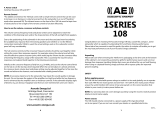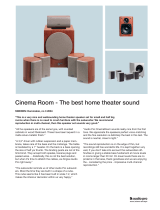
“Avocet” is designed to solve the problems of accurate monitoring and volume control as
required by workstation users, studios and mastering rooms alike. Avocet is a stereo
controller with three digital inputs, three analog inputs and a headphone system. All
digital signals are up-sampled and jitter reduced to ensure highest accuracy during D/A
conversion. Options are available to change the D/A mode, all though the default mode
has been chosen as more accurate.
Avocet’s many features including; dim, mute, phase, mono, and 16 bit truncation func-
tions, plus a speaker select switch that sends line level balanced audio to one of three
outputs. The six input sources have on the fly gain trim capability.
An accessory connector has extra functions for the technically minded. They are; buff-
ered stereo output, mono output, talk back mic output, headphone bus output, and
several input control functions such as; talk back enable, mute and input selection
control that could be used for a pre-listen or solo command. This connector is also used
to tie audio boxes together for surround operation.
The internal headphone amplifier can be fed from the program source or an external
input. Provisions for a talk back function are included.
The three headphone sources are;
• The analog AUX input
• Main, meaning the audio source selected by the input button
• Program, meaning the audio source selected by the input button.
However the level control, mono and phase buttons also apply to the program
source.
All three phone sources have individual gain settings controlled by the green knob.
The talkback mic (not supplied and there is no phantom power) is hooked into the xlr connector on
the remote. There is a mic level trim pot next to the xlr connector. The talk back mic
signal is mixed into the headphone amplifier along with the selected headphone source.
By sending a cue mix to the Aux input you can use the headphone system for doing
overdubs in the studio and have communication to the artist. At the same time the main
audio path can operate independently of the headphone system
SURROUND
By using 3 two channel audio boxes Avocet will function as a 5.1 system, and 4 audio
boxes makes a 7.1 system. See the speaker setup information. This function allows
intergrating, both surround and stereo speaker systems. A metering system is under
discussion. A specially made accessory cable connects the audio boxes when working
surround.
Systems that ship surround from the factory have lables on them as to how the audio
boxes are configured.
3























